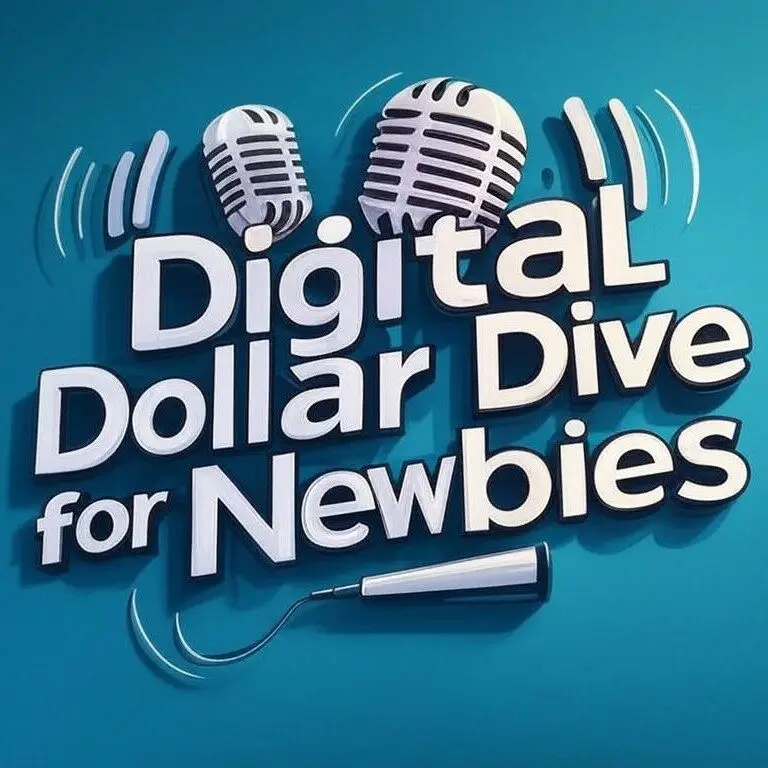Welcome to Digital Dollar Dive for Newbies, your go-to resource for how to Do Freelancing to earn online income as a beginner. If you’re ready to start freelancing from home with no experience, this guide is for you!
Freelancing has become a game-changer for millions looking to earn money from the comfort of their homes. In 2024, over 60% of the U.S. workforce engaged in some form of freelance work, with many starting without prior skills or experience. Whether you’re a student, stay-at-home parent, or someone seeking a flexible side hustle, freelancing offers a low-barrier entry to the digital economy. This comprehensive guide will walk you through how to start freelancing for beginners, covering everything from choosing a service to landing your first client. Optimized with low-competition keywords like “start freelancing no experience” and “earn money freelancing from home,” this post is designed to help you kickstart your freelance journey with confidence.
Let’s dive into the practical steps, platforms, and tips to start earning from home today!
What Is Freelancing, and Why Start as a Beginner?
Freelancing involves offering services to clients on a project-by-project basis, often remotely. Unlike traditional jobs, freelancers enjoy flexibility in choosing their hours, clients, and workload. Services can range from writing and graphic design to virtual assistance and social media management—many of which require no prior experience.
Why Freelancing Is Perfect for Beginners
- Low Entry Barriers: Many freelance gigs require only basic skills like communication or organization.
- Flexible Schedule: Work from home on your terms, ideal for busy lifestyles.
- Skill Development: Learn valuable skills like time management and client communication while earning.
- Scalable Income: Start part-time and grow into a full-time career as you gain experience.
By targeting keywords like “freelancing for beginners,” this guide aims to attract newbies searching for accessible ways to earn online. Let’s explore how to get started.
Step 1: Identify Your Freelance Service
The first step in freelancing is deciding what service to offer. As a beginner, focus on skills you already have or can quickly learn. Here are five beginner-friendly freelance services, optimized for low-competition keywords:
1. Freelance Writing
- Keyword: “Freelance writing no experience”
- Tasks: Write blog posts, product descriptions, or social media content.
- Why It’s Great: Requires only basic writing skills and free tools like Grammarly.
- Platforms: Upwork, Fiverr, ProBlogger.
2. Virtual Assistance
- Keyword: “Virtual assistant jobs no experience”
- Tasks: Manage emails, schedule appointments, or perform data entry.
- Why It’s Great: Leverages organizational skills; many clients train beginners.
- Platforms: Belay, Fancy Hands, Upwork.
3. Social Media Management
- Keyword: “Social media jobs no experience”
- Tasks: Create posts, schedule content, or engage with followers.
- Why It’s Great: Familiar platforms like Instagram and Facebook; use free tools like Canva.
- Platforms: Fiverr, Freelancer, LinkedIn.
4. Graphic Design (Basic)
- Keyword: “Beginner graphic design freelance”
- Tasks: Design social media graphics, flyers, or logos using templates.
- Why It’s Great: Free tools like Canva make design accessible to newbies.
- Platforms: 99designs, Fiverr, Upwork.
5. Transcription
- Keyword: “Transcription jobs for beginners”
- Tasks: Convert audio to text for podcasts, interviews, or videos.
- Why It’s Great: Requires only typing skills and attention to detail.
- Platforms: Rev, TranscribeMe, Scribie.
How to Choose
- Assess Your Skills: Can you write clearly? Are you organized? Pick a service that aligns with your strengths.
- Research Demand: Use Google Keyword Planner to find high-demand, low-competition niches (e.g., “virtual assistant jobs no experience”).
- Start Simple: Choose one service to focus on, such as writing or virtual assistance, to avoid overwhelm.
Step 2: Set Up Your Freelance Profile
Once you’ve chosen a service, create a professional profile on freelance platforms. Your profile is your digital storefront, so make it appealing even without experience.
Best Platforms for Beginners
- Upwork: Ideal for writing, virtual assistance, and transcription. Free to join; charges a service fee (5–20%).
- Fiverr: Great for small gigs like graphic design or social media posts. Set your own prices starting at $5.
- Freelancer: Offers a variety of beginner-friendly projects; free to join with optional paid plans.
- LinkedIn: Free to use; perfect for networking and finding local clients.
Tips for a Standout Profile
- Write a Clear Bio: Highlight your enthusiasm and willingness to learn. Example: “Detail-oriented beginner virtual assistant eager to help businesses stay organized.”
- Use a Professional Photo: A friendly headshot builds trust (use a smartphone selfie if needed).
- List Relevant Skills: Include soft skills like communication or tools you know (e.g., Canva, Google Docs).
- Optimize for Keywords: Add phrases like “freelance writing no experience” to attract clients searching for beginners.
Tools to Enhance Your Profile
- Canva: Create a simple portfolio of sample work (e.g., mock blog posts or graphics).
- Grammarly: Ensure your profile and proposals are error-free.
- Trello: Organize your applications and client tasks.
Step 3: Find Your First Freelance Gig
Landing your first gig can feel daunting, but beginner-friendly platforms make it achievable. Here’s how to start:
Strategies to Win Gigs
- Start with Low-Budget Projects: Apply for gigs paying $5–$20 to build your portfolio.
- Write Personalized Proposals: Tailor each proposal to the client’s needs. Example: “I noticed you need blog posts for your travel site. I’m a beginner writer passionate about creating engaging content and happy to work within your budget.”
- Apply Daily: Submit 5–10 proposals daily to increase your chances.
- Leverage Local Networks: Reach out to small businesses via LinkedIn or local Facebook groups, offering services like social media management.
Avoiding Scams
- Stick to Reputable Platforms: Use Upwork, Fiverr, or LinkedIn to avoid shady clients.
- Never Pay to Work: Legit gigs don’t require upfront fees.
- Research Clients: Check reviews or ratings on platforms before accepting work.
Earning Potential
Beginner freelancers typically earn $5–$15 per hour. For example:
- Writing a 500-word blog post at $10 takes 1–2 hours, netting $50–$100 weekly for 5–10 hours.
- Virtual assistance at $12/hour for 10 hours weekly earns $120.
Step 4: Deliver Quality Work and Build Your Reputation
Your first few gigs are crucial for establishing credibility. Here’s how to impress clients and secure repeat work:
Tips for Success
- Meet Deadlines: Use tools like Google Calendar to stay on track.
- Communicate Clearly: Update clients on progress and ask for clarification if needed.
- Polish Your Work: Use Grammarly for writing or Canva for designs to ensure professionalism.
- Ask for Feedback: Request reviews after completing projects to boost your profile.
Free Tools to Shine
- Google Docs: Collaborate with clients on drafts.
- Canva: Create visuals for social media or presentations.
- otter.ai**: Assist with transcription by converting audio to text.
Building a Portfolio
- Save all completed work (with client permission) to showcase on your profile.
- Create mock projects (e.g., a sample blog post or social media graphic) if you lack real projects.
- Host your portfolio on a free site like Google Sites or Carrd.
Step 5: Scale Your Freelance Business
Once you’ve landed a few gigs and built confidence, it’s time to grow your income and client base.
How to Scale
- Raise Your Rates: After 3–5 successful projects, increase your hourly rate (e.g., from $10 to $15).
- Specialize: Focus on a niche like travel writing or e-commerce virtual assistance to charge more.
- Find Retainer Clients: Secure ongoing work (e.g., weekly blog posts) for stable income.
- Promote Yourself: Create a simple blog or YouTube channel to showcase your expertise, using keywords like “earn money freelancing from home.”
Advanced Tools
- Wave: Free invoicing and accounting for tracking payments.
- Later: Schedule social media posts for clients.
- Notion: Manage projects and client communications.
Earning Potential
With experience, freelancers earn $20–$50 per hour. Part-time freelancers working 15 hours weekly at $20/hour can earn $1,200 monthly, while full-time freelancers may make $3,000+.
Common Challenges and How to Overcome Them
Freelancing for beginners comes with hurdles, but they’re manageable with the right approach:
1. Finding Clients
- Solution: Apply consistently and diversify platforms (e.g., Upwork + LinkedIn). Join freelance Facebook groups for leads.
- Keyword Tip: Optimize your profile with “start freelancing no experience” to attract entry-level gigs.
2. Managing Time
- Solution: Use Trello or Google Calendar to prioritize tasks. Set boundaries to avoid overworking.
- Tool: Pomodoro timers (e.g., TomatoTimer) boost productivity.
3. Handling Rejections
- Solution: Treat rejections as learning opportunities. Refine your proposals based on feedback.
- Mindset: Apply to 50+ gigs to land 1–2; persistence pays off.
4. Avoiding Burnout
- Solution: Start with 5–10 hours weekly and scale gradually. Take breaks to maintain creativity.
- Tool: Apps like Headspace offer free meditation for stress relief.
Tips to Stay Safe and Succeed
Drawing from your interest in avoiding scams (from our prior chats), here are key tips to freelance safely and thrive:
- Research Platforms: Check reviews on Trustpilot or Reddit before joining (e.g., Upwork has a 4.3/5 rating on Trustpilot).
- Use Secure Payments: Platforms like Upwork escrow funds; for direct clients, use PayPal or Wave.
- Protect Your Data: Enable two-factor authentication and use a password manager like Bitwarden.
- Start Small: Focus on one platform and one service to build confidence, as you appreciated1.5 million freelancers worldwide used Upwork in 2023, with 70% working remotely, per Upwork’s 2024 report.
- Learn Continuously: Watch free YouTube tutorials on skills like Canva design or freelance pitching.
- Network: Join online communities like Freelancers Union or Reddit’s r/freelance for tips and support.
Common Mistakes to Avoid
- Undercharging: Don’t work for $2/hour; value your time at $10+/hour even as a beginner.
- Ignoring SEO: If you start a blog to promote your services, use keywords like “freelancing for beginners” to attract traffic.
- Taking on Too Much: Limit yourself to 1–2 clients initially to maintain quality.
- Falling for Scams: Avoid “jobs” requiring upfront payments or sharing bank details.
Conclusion: Launch Your Freelance Journey Today
Freelancing for beginners is a proven path to earning money from home, even with no experience. By choosing a beginner-friendly service, setting up a professional profile, and leveraging platforms like Upwork and Fiverr, you can land your first gig and start building a flexible, rewarding career. With low-competition keywords like “start freelancing no experience” and “earn money freelancing from home,” this guide is designed to help you get discovered and succeed.
At Digital Dollar Dive for Newbies, we’re committed to helping you navigate the digital economy. Pick one freelance service, take action, and share your progress in the comments below! Want more tips on freelancing or online earning? Subscribe to our newsletter for weekly insights tailored to beginners.
Ready to dive into freelancing? Start today, and turn your skills into income from home!
This was How to Do Freelancing: A Beginner’s Guide to Earning from Home
Disclaimer: Earnings vary based on effort, time, and market conditions. Always research platforms and clients to ensure legitimacy. Digital Dollar Dive for Newbies is not responsible for outcomes from third-party platforms.

